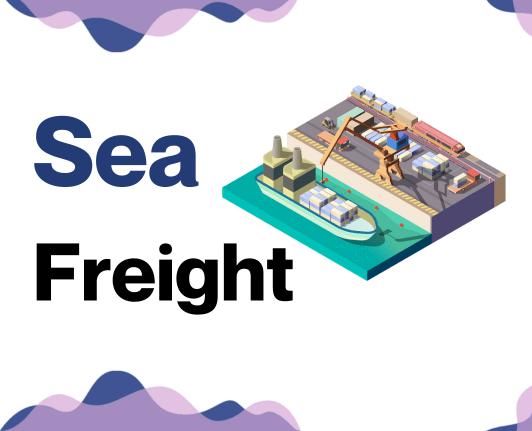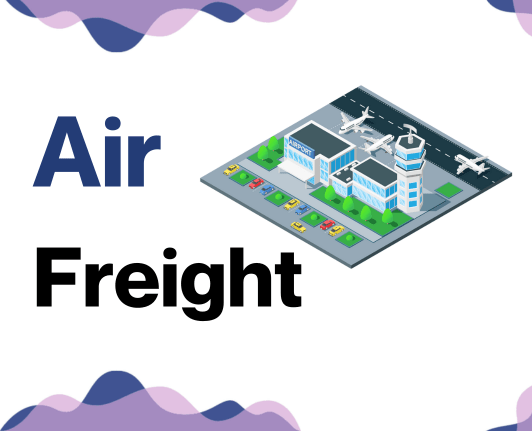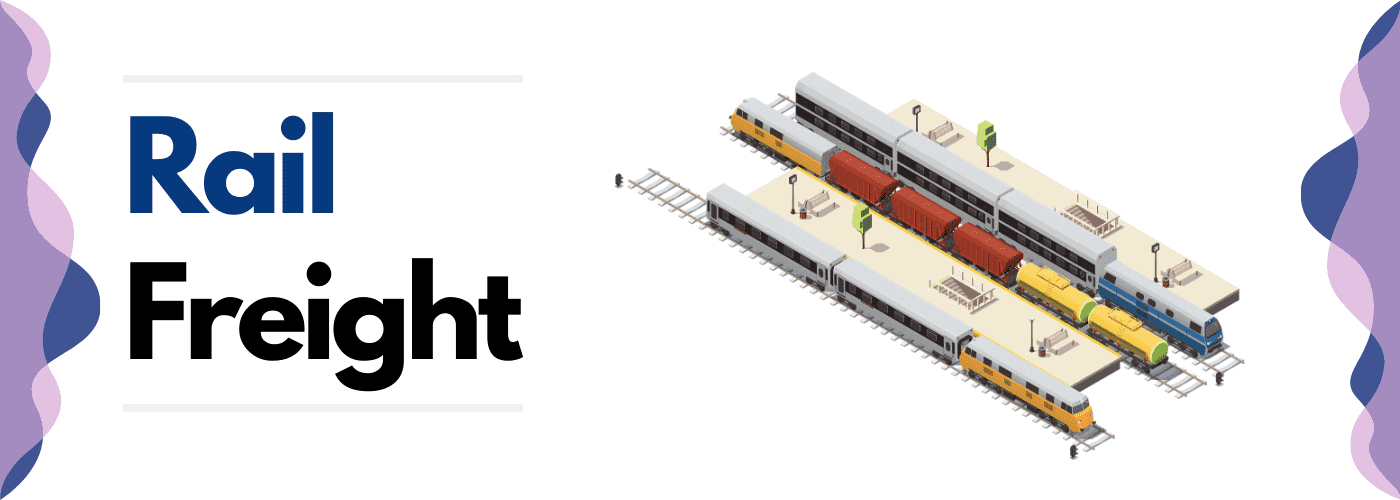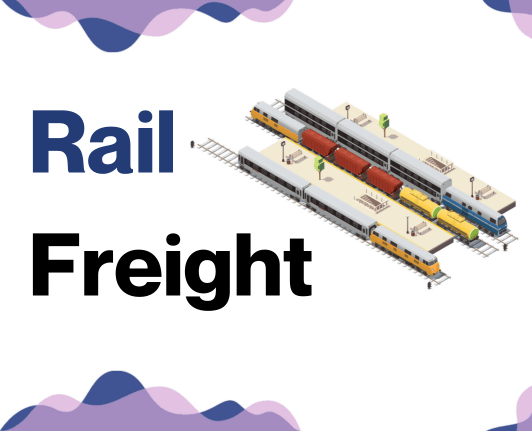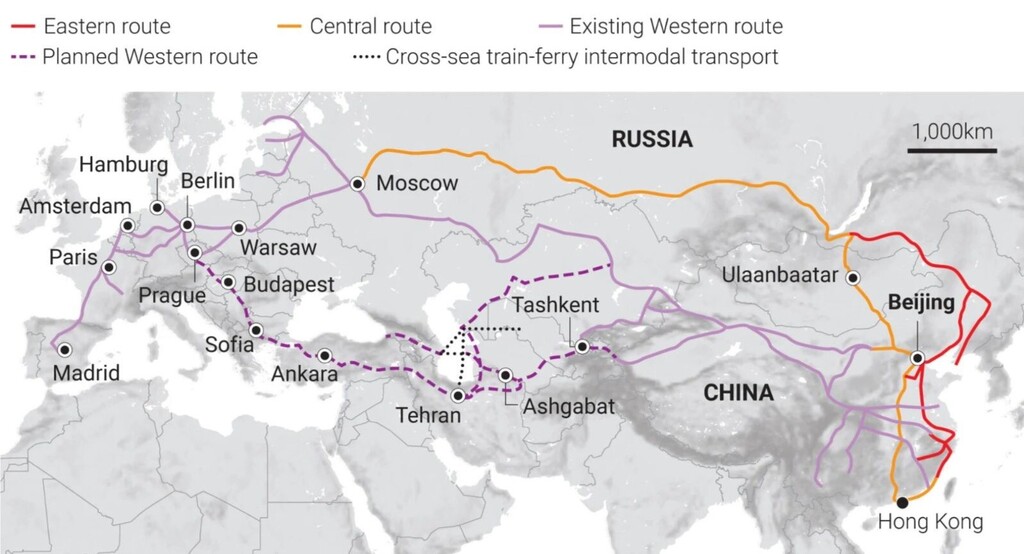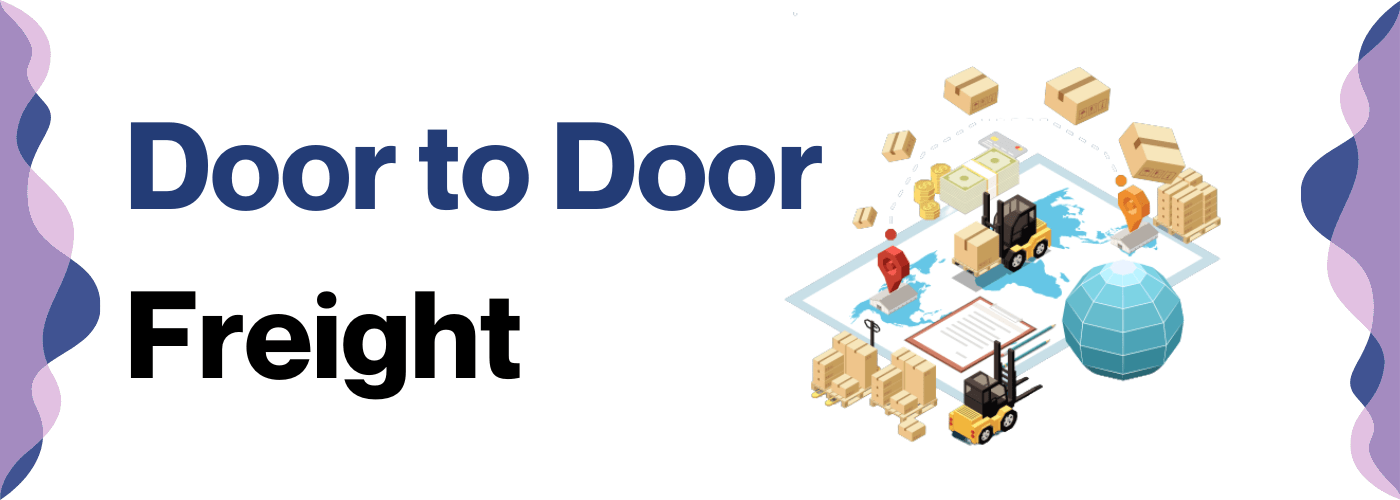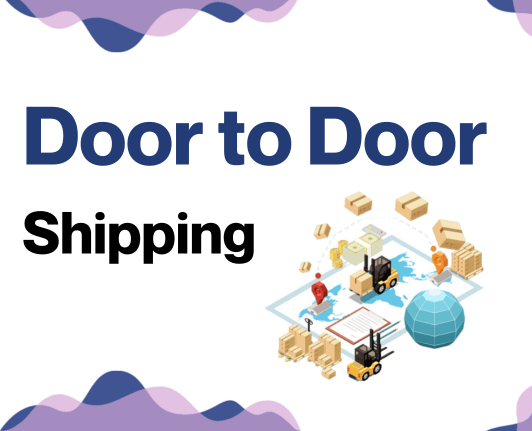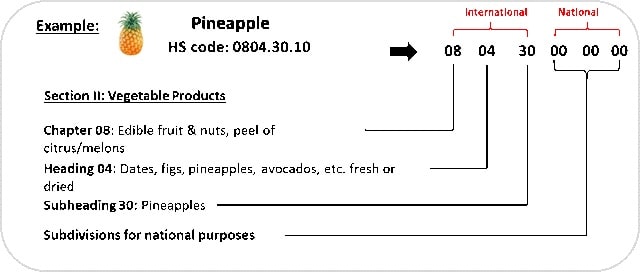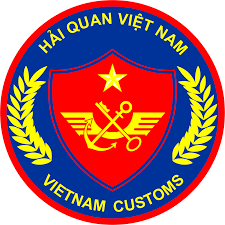Sending packages abroad? It's not like mailing a postcard to your Aunt Mabel! Businesses often grapple with understanding rates, transit times, and the complexities of customs regulations when freight transporting between Vietnam and Hungary. In this guide, you can expect an in-depth look into these pain points. We've got you covered with everything from exploring different freight routes - be it air, sea, road, or rail - to guiding you through customs clearance, navigating duties, managing taxes, and providing tailored advice to suit your business needs. If the process still feels overwhelming, let FNM Vietnam handle it for you! As experienced international freight forwarders, we are committed to transforming these shipping challenges into successful, hassle-free experiences for businesses.
Which are the different modes of transportation between Vietnam and Hungary?
If you're looking to ship goods between Vietnam and Hungary, think of it like planning a family vacation. Do you want a slow, scenic route by sea, or a fast flight? Maybe a road trip across several countries? Ocean shipping vessels, like an extended cruise, may take longer but often have a larger capacity for goods. If speed trumps all, air freight is like a speedy airplane trip. Road and rail may be practical, but remember - it's quite a road trip! Each mode has its benefits, it's simply a matter of packing for your 'trip' and choosing the one that suits best!
How can FNM Vietnam help?
Shipping goods between Vietnam and Hungary? FNM Vietnam bridges the distance, handling everything from customs to transport. Let us shoulder the logistics while you focus on growing your business. Need a free estimate? Contact us and receive it within 24 hours. Have questions? Our expert consultants are always a call away.

FNM Vietnam Tip: Sea freight might be the best solution for you if:
- You're moving big loads or large items. Sea freight offers roomy, cost-effective solutions.
- Your shipment isn't time-critical. Ocean routes take longer but are often more reliable.
- Your supply chain links major ports, tapping into a broad network of sea lanes.
Sea freight between Vietnam and Hungary
Strengthening your company's grip on the seafaring lanes between Vietnam and Hungary is like mastering the art of high-stakes chess. Both nations, powerhouses in their respective regions, are connected by a pulsating network of bustling cargo ports, with ocean shipping serving as a strategic queen in your game of trade. The majestic port cities of Hai Phong and Ho Chi Minh in Vietnam align with Hungary's river-riding Budapest, forming the backbone of this vital supply chain route.
Shipping heavy volumes across the seas may feel like moving mountains. But with ocean freight, your high-volume commodities become feather-light on your budget, albeit testing your patience with its unhurried pace.
Unraveling the complexities of logistics between Vietnam and Hungary can be as bewildering as deciphering an encrypted code. And yes, errors are more prevalent than you think. But there's a playbook. This guide is your decoding tool, unveiling the specifics, the common mistakes, and laying out the best practices. By using these guidelines, moving goods from one port to another will feel no more complex than taking a neighborhood stroll.
Main shipping ports in Vietnam
Port of Ho Chi Minh City:
Location and Volume: Located at the mouth of the Saigon River, this port plays a vital role in Vietnam's imports and exports, with a shipping volume of 6 million TEUs in 2019 alone.
Key Trading Partners and Strategic Importance: The Port of Ho Chi Minh City chiefly conducts trade with China, South Korea, and the USA. It serves as the primary gateway for international trade in Southern Vietnam.
Context for Businesses: If you're looking to tap into the thriving markets of South Vietnam, using the Port of Ho Chi Minh City can help you leverage its great connectivity, and its capacity to handle high volumes of cargo.
Port of Hai Phong:
Location and Volume: Positioned in the coastal city of Hai Phong, this port lies on the Cam River and is crucial to North Vietnam’s shipping industry, handling about 32.1 million tons of goods annually.
Key Trading Partners and Strategic Importance: Key trading partners include ASEAN countries, Japan, and China. Serving as Vietnam's key northern port, it also holds strategic importance due to its proximity to China's southern region.
Context for Businesses: If your trading pursuits involve China or the ASEAN markets, the Port of Hai Phong may prove beneficial considering its strategic location and comprehensive facilities.
Port of Da Nang:
Location and Volume: Found in Central Vietnam, the Port of Da Nang boasts a shipping volume of 3.6 million tons. It is midway between the northern and southern shipping routes within Vietnam.
Key Trading Partners and Strategic Importance: Da Nang Port engages in healthy trade activity with over 20 countries, mainly China, South Korea, and Japan. Additionally, its location makes it crucial to domestic trade.
Context for Businesses: Consider the Port of Da Nang in your shipping strategy if you're dealing with various markets across the length of Vietnam, thanks to its strategic central placement.
Port of Quy Nhon:
Location and Volume: Situated in Binh Dinh Province, the Port of Quy Nhon processed about 9.3 million tons of freight in 2019.
Key Trading Partners and Strategic Importance: This port serves as a significant connection to Cambodia, Laos, Northeast Thailand, and North Vietnam.
Context for Businesses: If your business involves these Southeast Asian markets, incorporating the Port of Quy Nhon into your logistics plans can enhance reach due to its robust regional connections.
Port of Cai Mep:
Location and Volume: Nestled in Ba Ria-Vung Tau Province, the Port of Cai Mep caters predominantly to container shipping, with a capacity of 1.65 million TEUs per year.
Key Trading Partners and Strategic Importance: Serving mainly Europe and the Americas, this port is well-positioned to handle transpacific shipping.
Context for Businesses: The Port of Cai Mep could be a valuable part of your supply chain if you're trading with European and American markets due to its specialty in container shipping and transpacific services.
Port of Cam Pha:
Location and Volume: Located in northern Vietnam, the Port of Cam Pha primarily specializes in bulk and coal cargo, dealing with approximately 25 million tons annually.
Key Trading Partners and Strategic Importance: Cam Pha Port mainly trades with China, making it a significant player in Vietnam's coal export industry.
Context for Businesses: If your company is in the bulk cargo sector, specifically coal, the Port of Cam Pha provides a direct and established route towards the massive Chinese market.
Main shipping ports in Hungary
Port of Csepel
Location and Volume: Located in southern Budapest on the Danube River, the Port of Csepel is Hungary's principal port, handling more than 85% of the country's maritime freight. With a shipping volume of around 2.5 million TEUs annually, this port acts as the central hub of Hungarian maritime trade.
Key Trading Partners and Strategic Importance: The port maintains intensive trade relationships with Germany, Austria, Slovakia, Bulgaria, and Serbia. As an important node in the Danube waterway system, it also provides a direct connection to major European cities via river, rail, and road networks.
Context for Businesses: If you're looking to secure efficient logistic channels within the European market, the Port of Csepel presents a vital strategic advantage due to its well-connected infrastructure and handling capacity.
Port of Baja
Location and Volume: Situated on the south Hungarian section of the Danube River, the Port of Baja acts as the second largest river-port of the country. With an annual shipping capacity of about 1.5 million TEUs, it is a significant contributor to the regional trading activities.
Key Trading Partners and Strategic Importance: The Port of Baja has Euro-access agreements with countries along the Danube River, making its main trading partners Austria, Germany, Romania, and Slovakia. Along with supporting local industries, it also strengthens the city's connectivity with Central and Eastern Europe.
Context for Businesses: If your plan involves regular transport of goods to or from Central and Eastern European countries, considering the Port of Baja in your shipping strategy can add significant value due to its geographical position and close ties with these markets.
Port of Mohács
Location and Volume: Located in southern Hungary on the Danube River, the Port of Mohács is an international waterway port, handling a significant portion of the country's import/export trade. Due to its location near the Croatian border, this port handles around 1 million TEUs annually.
Key Trading Partners and Strategic Importance: The Port of Mohács primarily engages in trade with Germany, Serbia, Croatia, and Romania. It provides a bridge between Western and Southeastern Europe, supporting Hungarian and European import/export businesses.
Context for Businesses: If your logistic requirements include shipments to the Balkans or Western Europe, the Port of Mohács with its strategic positioning and connections could be a valuable touchpoint for your shipping routes.
Port of Győr-Gönyű
Location and Volume: Located in northwestern Hungary, the Port of Győr-Gönyű is a multi-modal freight facility, with an annual shipping volume of approximately 800,000 TEUs.
Key Trading Partners and Strategic Importance: This Port is of critical importance to the regional industries, including automobile and electronics. Its key trading partners primarily include Germany, Austria, and the Czech Republic.
Context for Businesses: For companies involved in the tech and automotive industries, plotting the Port of Győr-Gönyű into your shipping strategy could provide you with competitive shipping times and promote market penetrability.
Should I choose FCL or LCL when shipping between Vietnam and Hungary?
Choosing between FCL (Full Container Load) and LCL (Less Container Load), also known as consolidation, is pivotal in ensuring strategic, cost-effective, and timely freight operations between Vietnam and Hungary. This decision could determine the success of your shipping process, influencing everything from your bottom-line costs to delivery timeframes. We understand you need the right insights tailored to your specific needs. In this section, we'll explore the nitty-gritty of both options, equip you with the wisdom to navigate the sea freight labyrinth, and empower you to make an informed decision that benefits your business. Let's dive in, shall we?
LCL: Less than Container Load
Definition: Less than Container Load (LCL) refers to shipping small amounts of cargo that wouldn't fill up a standard container. Here, your goods are consolidated with others into one container.
When to Use: Opt for LCL if your freight doesn't run beyond 13-15 CBM (cubic meters). It offers flexibility for low-volume shipments and often bears a lower price owing to shared space and costs.
Example: Let's say you’re shipping artisanal crafts from Hanoi to Budapest. The size of your cargo is only about 10 CBM. Instead of paying for a full container which will mostly be empty, you can utilize LCL. Your crafts would be packed with other smaller shipments, turning your cost management more efficient.
Cost Implications: The cost for LCL shipments varies mostly on weight and cubic size. With shared container usage, you're billed only for the size and weight of your cargo. It's economical for less bulky shipments but may exceed FCL costs for larger freight, given LCL's per unit shipping cost is generally higher. Ensure to consult LCL freight shipping quotes for precise pricing. Main takeaway: LCL shipping makes sense monetarily for smaller shipments, but weight and cubic size could significantly impact your final LCL freight price.
FCL: Full Container Load
Definition: Full Container Load (FCL) shipping is an ocean freight service where an entire container is exclusively devoted to a client's shipment.
When to Use: FCL is a great choice when your cargo volume exceeds 13/14/15 CBM. It offers a safer shipping experience, as the container remains sealed from the origin to the destination.
Example: Consider Mr. Trung, a Vietnamese furniture manufacturer shipping a 20'ft container fully loaded with chairs and tables to a retailer in Hungary. Mr. Trung finds FCL fits his large volume needs perfectly and appreciates the extra security it brings.
Cost Implications: In comparison to its counterpart, Less Than Container Load (LCL), the fcl shipping quote per unit is usually cheaper for larger volumes, being more cost-effective for a 40'ft container than a 20'ft container. However, it's important to remember that the entire fcl container cost has to be borne by the shipper, hence it's more affordable when dealing with high volume shipments.
Say goodbye to shipping headaches!
Simplify your shipping journey between Vietnam and Hungary with FNM Vietnam's top-notch services. Our ocean freight consultants are equipped to guide you in deciding between consolidation or full container shipping. They consider various elements such as your budget, cargo size, and urgency to propose the best option. Eradicate complexities and uncertainties related to international trade with us. Contact us today for a free quote and experience hassle-free cargo shipping!
How long does sea freight take between Vietnam and Hungary?
Sea freight between Vietnam and Hungary often averages around 45 days. When estimating sea transit times, it's important to consider several variables such as the specific ports used, the weight and nature of the goods. These factors can significantly influence the exact time frame. For an accurate estimate suited to your specific needs, it's recommended to consult a freight forwarder like FNM Vietnam to receive a tailored quote.
Here's a table demonstrating the average sea freight transit times from various Vietnamese ports to Hungarian ports:
| Vietnam Ports | Hungarian Ports | Average Transit Time (days) |
| Port of Hai Phong | Port of Budapest | 30 |
| Port of Da Nang | Port of Budapest | 29 |
| Port of Quy Nhon | Port of Budapest | 28 |
| Port of Ho Chi Minh City | Port of Budapest | 27 |
*Please note: Hungary is a landlocked country and does not have its own seaports. All sea freight is managed through other nearby ports in countries like Austria, where it then travels by rail or road to reach its destination in Hungary.
How much does it cost to ship a container between Vietnam and Hungary?
Transporting a container from Vietnam to Hungary comes with many moving parts, making it difficult to give a singular, catch-all cost. Rates per cubic meter (CBM) range widely, tied tightly to factors such as ocean freight rates, loading point, delivery destination, nature of the shipped goods, and the chosen shipping carrier. Even monthly market fluctuations can sway your shipping cost. But no worries! Our skilled team of shipping specialists customizes quotes fitting each client's distinct requirements, ensuring you get the most effective rates for your particular needs. Dive into the combination of our unique case-by-case tailoring and broad industry expertise, and unlock the best pricing pathway for your shipping endeavor.
Special transportation services
Out of Gauge (OOG) Container
Definition: Out of Gauge (OOG) containers, also known as oversized freight, are specialized solutions for cargo that doesn't fit within standard dimensions of a container due to its size or shape.
Suitable for: OOG Containers are ideal for irregularly shaped items or items which exceed standard dimensions.
Examples: Construction equipment, heavy machinery, luxury yachts, and large vehicles are good examples of Out of Gauge cargo.
Why it might be the best choice for you: If your product is larger than the dimensions of a standard container, an OOG container can ensure safe and efficient transport.
Break Bulk
Definition: Break bulk refers to the method of transporting goods that are not containerized, but instead loaded individually onto the ship.
Suitable for: Ships, cranes, cable drums, wood, steel bars or plates are all goods that might be shipped as break bulk.
Examples: Construction materials, manufacturing equipment, or yachts serve as practical examples of break bulk shipping.
Why it might be the best choice for you: If your goods are too large or heavy for containers and can be handled individually, then break bulk might be the solution.
Dry Bulk
Definition: Dry bulk refers to the transportation of unpackaged goods that are loaded and unloaded in large quantities like a loose cargo load.
Suitable for: Materials that are shipped in large quantities and do not need packaging.
Examples: Coal, grain, and ore are all often shipped as dry bulk.
Why it might be the best choice for you: If your goods are shipped in large volumes and don’t require packing, dry bulk could be the most cost-effective choice.
Roll-on/Roll-off (Ro-Ro)
Definition: Using a Ro-Ro vessel, goods are driven on and off the vessel using their own wheels or by a trailer or platform. It's a preferred method for shipping vehicles.
Suitable for: Road vehicles of all sorts, as well as heavy machinery that can be driven or towed.
Examples: Cars, trucks, trailers, tractors, mobile construction machinery are all frequently shipped using ro-ro vessels.
Why it might be the best choice for you: If you're looking to transport vehicles or machinery that can roll independently or with minimal support, Ro-Ro shipping is optimized for it.
Reefer Containers
Definition: Reefer containers are refrigerated containers used for shipping perishable goods that require temperature control.
Suitable for: Fresh or frozen produce, pharmaceuticals, and other temperature-sensitive goods.
Examples: Meats, fruits, vegetables, frozen foods, and medicinal products are commonly shipped in reefer containers.
Why it might be the best choice for you: If your items require a specific temperature range for safe transport, then look no further than a reefer container.
Do remember that while these options present distinct benefits, choosing the perfect transport solution often depends on tailoring to the specifics of your cargo. FNM Vietnam is here to help you navigate through these options, so don't hesitate to contact us for a free shipping quote within less than 24 hours.
FNM Vietnam Tip: Air freight might be the best solution for you if:
- You're on a tight schedule. Air freight delivers speed unmatched by other modes.
- Your cargo is under 2 CBM, a good fit for air's smaller capacity.
- Your destination is off the usual routes, making air's global network a key asset.
Air freight between Vietnam and Hungary
Harnessing the power of air freight between Vietnam and Hungary can be likened to having a jetpack for your business. With its speed and reliability, it's the magic carpet ride for your small, high-value shipments. Imagine sending a parcel filled with intricately designed Vietnamese silk fabrics, or a case of Hungary's famous Tokaji wines: air freight is your VIP service ensuring safe and swift deliveries.
However, remember that even a magic carpet ride needs the right calculations. Embarking on the air freight journey without considering vital factors, such as improperly estimating the goods' weight or unawareness of best practices, could turn your trip into a costly detour. So let's delve into how you can sail smoothly over potential turbulence.
Air Cargo vs Express Air Freight: How should I ship?
Diving into the world of freight, you might find yourself caught between traditional air cargo and express air freight when shipping from Vietnam to Hungary. Simplified, while air cargo typically means sharing an airliner with other cargo, express air freight gets your goods on a dedicated plane, speeding up the journey. Let's clear the haze and find out which suits your business better.
Should I choose Air Cargo between Vietnam and Hungary?
Air cargo between Vietnam and Hungary can be both cost-effective and reliable. Airlines like Vietnam Airlines and Lufthansa Cargo serve this route and provide dependable service. While this option offers longer transit times, it's mainly due to the airlines' fixed schedules. If your cargo is anywhere between 100 and 150 kg (220-330 lbs), then opting for air cargo becomes an attractive choice that might be right in line with your budgetary needs. It's a great option for businesses seeking value for money without compromising the quality of service.
Should I choose Express Air Freight between Vietnam and Hungary?
Express Air Freight is a specialized service, typically run by global giants like FedEx, UPS, or DHL. Unlike typical air freight, express services dedicate entire cargo planes solely to transporting goods, no passengers. If your shipment to Hungary from Vietnam is relatively lightweight - under 1 CBM or within the 100/150 kg (220/330 lbs) range, this can be a nifty option. It gives the advantage of quicker transfer times and simplifies customs clearance. Therefore, if speed is your priority and your package size is suitable, opting for Express Air Freight might be a winning decision.
Main international airports in Vietnam
Tan Son Nhat International Airport
Cargo Volume: Approximately 1.4 million metric tons annually.
Key Trading Partners: China, USA, Japan, South Korea.
Strategic Importance: Located in Ho Chi Minh City, the economic hub of Vietnam, Tan Son Nhat International Airport is the busiest airport in Vietnam in terms of cargo and passenger volume.
Notable Features: It boasts comprehensive freight facilities like advanced cargo handling systems, large-scale warehouses, and bonded warehousing area.
For Your Business: The airport hosts many major international airlines connecting Vietnam with key global markets. If your business is chiefly in Asia and North America, this airport could very well be the cornerstone of your logistics operations.
Noi Bai International Airport
Cargo Volume: Over 700,000 metric tons annually.
Key Trading Partners: China, South Korea, USA, Japan.
Strategic Importance: Noi Bai serves Hanoi, the political and cultural hub of Vietnam, providing a vital link to key international markets.
Notable Features: Economic zone nearby that facilitates speedy cargo clearance and enhanced ease of doing businesses.
For Your Business: €This airport may be optimal if you're shipping goods to or from Northern Vietnam. Its expansive capabilities and connectivity make it a sound choice if your trading partners are primarily in East Asia and the United States.
Cam Ranh International Airport
Cargo Volume: About 200,000 metric tons annually.
Key Trading Partners: Russia, South Korea, China, Malaysia.
Strategic Importance: Located in a key economic zone, Cam Ranh International Airport is an emerging cargo handling hub in the South Central Coast region of Vietnam.
Notable Features: Recently renovated modern terminal, strategic location for shipping maritime products.
For Your Business: If you’re looking to connect your supply chain to Russia or other economies of the Commonwealth of Independent States, consider making this airport a crucial part of your freight plan.
Dong Hoi International Airport
Cargo Volume: Smaller scale operations with increasing capacity.
Key Trading Partners: China, Thailand, South Korea.
Strategic Importance: It serves the Quang Binh Province, an emerging commercial and tourism center in Central Vietnam.
Notable Features: Known for swift customs procedures and efficient cargo facilities.
For Your Business: If your exploration of business expansions leans towards Central Vietnam, particularly the rapidly growing province of Quang Binh, Dong Hoi could be your ideal logistics solution.
Da Nang International Airport
Cargo Volume: Over 370,000 metric tons annually.
Key Trading Partners: China, South Korea, Japan, the USA.
Strategic Importance: As the leading airport in Central Vietnam, Da Nang International Airport serves one of the country’s major industrial and commercial centres.
Notable Features: Newly built cargo terminal, direct flights to several key international markets.
For Your Business: This airport is worth considering if you are involved in heavy industry or high-tech manufacturing, as Da Nang has become a hotbed for these industries.
Main international airports in Hungary
Budapest Ferenc Liszt International Airport
Cargo Volume: With an annual cargo volume exceeding 100,000 tonnes, this airport is the busiest in Hungary regarding freight operations.
Key Trading Partners: The airport's key trading partners include Germany, China, and the UK, catering to a broad array of industries, from automotive to electronics.
Strategic Importance: Its location in Central Europe makes it a strategic hub for the European Union's East-West business axis.
Notable Features: The airport has dedicated cargo terminals and advanced facilities for cargo handling, providing flexible solutions for varied freight needs.
For Your Business: If your business operations involve high-volume or time-sensitive goods, the Budapest Airport, with its significant cargo handling capacity and excellent connectivity, can be an integral part of your logistics strategy.
Pécs-Pogány International Airport
Cargo Volume: The cargo volume at this airport is modest in comparison to Budapest, but is steadily increasing.
Key Trading Partners: While the list of key trading partners is less global, the airport's main trading partners include several countries within the European Union.
Strategic Importance: Its location in Southern Hungary makes it an alternative access point to Central Europe, offering another versatile gateway destination.
Notable Features: Aircraft hangars at this airport are available to accommodate and service freight aircraft.
For Your Business: Pécs-Pogány could fit into your business's shipping strategy if you are seeking alternative, less busy routes into the European market, especially if your goods are bound for Southern or Eastern Europe.
Debrecen International Airport
Cargo Volume: This airport handles a lower volume of cargo in contrast to Budapest, mostly servicing local and regional traders.
Key Trading Partners: Its major trading partners consist of regional countries, predominantly the neighbouring countries in Eastern Europe.
Strategic Importance: Located in Eastern Hungary, Debrecen Airport provides an ideal distribution point for businesses aiming to penetrate the Eastern European market.
Notable Features: The airport facilitates quick customs clearance, helping businesses optimize their supply chain efficiency.
For Your Business: If you target Eastern European countries, utilizing Debrecen International Airport as a delivery point can cut down on transit times and enhance your competitiveness in these markets.
How long does air freight take between Vietnam and Hungary?
Shipping goods from Vietnam to Hungary via air freight typically takes between 3 to 6 days. Keep in mind, transit times can fluctuate depending on a number of factors such as the specific airports, the weight of the cargo, and what precisely you're shipping. If your business requires exact shipping times, it's highly advised to consult with a professional freight forwarder like FNM Vietnam.
How much does it cost to ship a parcel between Vietnam and Hungary with air freight?
Shipping rates for air freight parcels from Vietnam to Hungary typically fall within a broad average range, due to key variables such as distance between departure and arrival airports, package dimensions, weight, and the nature of the goods. This complexity makes it impossible to supply a one-size-fits-all rate. However, rest assured that our team is committed to providing you with the most competitive pricing possible, tailoring quotes to your specific needs. Reach out to us and receive a bespoke quote in less than 24 hours, free of charge.
What is the difference between volumetric and gross weight?
Gross weight refers to the total weight of the cargo, packaging, pallets, or any other involved materials. In contrast, volumetric weight, often termed 'dimensional weight', is the estimated weight calculated based on the overall dimensions of a package.
For air cargo, volumetric weight is calculated by multiplying the length, width, and height (all in centimeters) of the package, and then dividing by 6000. Let’s say you have a box of 120cm x 80cm x 60cm. This equals 576,000 cubic centimeters; divide by 6000, and you get a volumetric weight of 96kg.
Meanwhile, Express Air Freight uses similar calculations, but a different constant, dividing by 5000 instead. Our same 120 x 80 x 60 cm box will thus yield a volumetric weight of 115.2kg (253.53 lbs).
Gross weight, for both Air cargo and Express Air Freight, is determined by physically placing the freight on a scale. If our box weighed 80kg (176.37 lbs) on the scale, its gross weight should be recorded as such.
Understanding the difference between gross and volumetric weight is essential because your freight charges are based on the greater of the two. Hence, if your freight’s volumetric weight is higher than the gross weight, you’ll actually be charged based on the former. This is why ensuring accurate weights and measures of your packages matter to achieve cost-effective shipment.
FNM Vietnam tip: Rail freight might be the best solution for you if:
- You need a budget-friendly way to move bulk. Rail freight is cost-effective for large volumes.
- Your route is rail-friendly, offering both reliability and eco-benefits.
- Your goods start and end near rail hubs, cutting down on extra road transit.
Rail freight between Vietnam and Hungary
Choo-choo! Has your shipping solution been right on track this whole time? If not, let's delve into the fascinating, and at times intricate, world of rail freight between Vietnam and Hungary. This economic pillar was first laid down in the early 2000s, interlinking not just these trading partners, but also opening paths through China, Russia, and Slovakia.
Your cargo, whether textiles from Hanoi or machinery from Budapest, joins a diverse mix of goods perpetuating this resourceful and bustling trade route. This collaboration has dappling effects on both economies, fostering a unique intertwining of mutual growth.
However, tread cautiously! Rail freight balances on the thin rail between cost and time. Its less pricey array comes with longer transit times than air freight and certain bottlenecks during custom clearances through multiple nations.
All aboard! But every method has its unique quirks. Scrutinize these details to ensure rail freight aligns with your specific shipping needs. Your journey to proficient international trade might just be a train ride away!
What are the main train stations between Vietnam and Hungary?
1. Yen Vien Station, Vietnam:
Yen Vien Station is a major railway freight terminal in Vietnam. It's located near the capital city, Hanoi, making it a strategic hub for northern Vietnam. The station is connected to the Trans-Asian Railway network, offering extensive routes across Asia and beyond. For your business, its key trading partners include China, Laos, and Thailand. Yen Vien's volume of freight cargo is substantial, efficiently handling thousands of tons of goods yearly, including electronics, textiles, and commodities, which reflect Vietnam’s export products. The station's modern facilities favor multiple forms of cargo, allowing for smooth transfers to further destinations.
2. Saigon Station, Vietnam:
In the heart of Ho Chi Minh City, Saigon Station serves as a crucial junction point for rail freight transportation in southern Vietnam. With access to both seaports and the international rail network, it's a vital conduit for goods en route to China, Thailand, and other Southeast Asian nations. Saigon's strategic location aids swift distribution nationwide while providing your business with opportunities for flexible shipping strategies. Main exports from this station include mineral products, agricultural products, and machinery, highlighting the region's diverse industrial base.
3. Budapest-Keleti Station, Hungary:
Budapest-Keleti is Hungary’s most prominent train station, with multiple rail lines leading to other European nations. Known for its impressive 19th-century architecture, this station is much more than aesthetically pleasing. Budapest-Keleti has impressive capacity, effortlessly managing vast volumes of freight. Key trading partners include Germany, Austria, Slovakia, and Romania. The strength of this station lies in its connections to the European rail network, making it a key node for distributing goods throughout the continent.
4. Záhony Station, Hungary:
Záhony station is nestled on the Hungarian-Ukrainian border, making it an essential connection point between Western and Eastern Europe. The station is well-equipped to handle large volumes of freight, especially given its proximity to numerous export-oriented industries. Key trading partners encompass Ukraine, Slovakia, Poland, and Russia. As it is a border-crossing station, Záhony has stringent customs controls, yet significantly contributes to the smooth transit of goods across borders. The station is particularly useful if your business trades with Eastern Europe or beyond.
When you consider these stations for your shipping strategy, remember to take into account your trading partners, cargo type, intended markets, and proximity. Capitalizing on these strategic rail hubs might just be the competitive advantage your business needs.
How long does rail freight take between Vietnam and Hungary?
Shipping durations between Vietnam and Hungary via rail freight can fluctify depending on factors such as customs procedures, weather conditions, and freight congestion, but on average, it takes approximately 18-25 days.
Here you can find a list of rail networks connecting Asia and Europe, complete with estimated transit times and departure frequency. Remember, these are just estimates - actual transit can be unpredictable, due to varying factors.
- Zhengzhou to Hamburg (Germany): ~ 15-17 days, Departs Daily
- Zhengzhou to Munich (Germany): ~ 17-18 days, Departs Monday and Friday
- Zhengzhou to Liege (Belgium)/Milan (Italy): ~ 20 days, Departs Monday, Thursday and Friday
- Chongqing to Duisburg (Germany): ~ 16-17 days, Departs Monday/Friday
- Yiwu to Hamburg (Germany): ~ 16-18 days, Departs Monday/Thursday/Friday
- Yiwu to Duisburg (Germany): ~ 16-18 days, Departs Monday/Thursday/Friday
- Yiwu to Madrid (Spain): ~ 20 days, Departs Monday/Thursday/Friday
- Wuhan to Hamburg (Germany): ~ 17-19 days, Departs Saturday/Wednesday/Thursday
- Wuhan to Duisburg (Germany): ~ 17-19 days, Departs Saturday/Wednesday/Thursday
- Chengdu to Tilburg (Netherlands): ~ 18 days, Departs Wednesday/Sundayy
- Suzhou to Hamburg (Germany): ~ 18-20 days, Departs Sunday
- Suzhou to Duisburg (Germany): ~ 18-20 days, Departs Sunday
- Xi'an to Duisburg (Germany): ~ 18-20 days, Departs Wednesday/Thursday/Friday/Saturday
What are the advantages of rail transport between Vietnam and Hungary
With your business caught between the massive sea freight timelines and the sky-high costs of air transport, rail freight can be your path to an ideal compromise. For instance, moving goods from Hanoi to Budapest via rail can shave off substantial time compared to shipping, whilst avoiding the hefty expenditure flying your freight incurs. The Trans-China Railway connects directly to Hungary, creating an efficient, uninterrupted corridor for your Vietnam produce. Imagine getting your fashion apparel or electronic components to the European market quicker than sea freight, and at a fraction of the cost of air cargo. The robust rail infrastructure in both Vietnam and Hungary supports timely and reliable delivery. Plus, with lower carbon emissions compared to air transport, your business can maintain a greener footprint. It's a win-win for practicality and sustainability.
How much does shipping goods by train between Vietnam and Hungary cost?
Nailing down an exact cost for rail freight between Vietnam and Hungary - just like with air and sea - can be tricky. Why? Because pricing hinges on factors like shipment size, weight, and urgency, which vary for everyone. But here's the good news: our team is committed to working side-by-side with you to secure the best rates for your unique dispatch. We dig into the nitty-gritty, crafting quotes that respect your budget and your needs. Sound fair? Remember, we don't do boilerplate pricing - each quote is made-to-measure. Intrigued? Reach out today and we'll whip up a free, no-obligation quote within 24 hours. It's how we roll.
FNM Vietnam Tip: Door to Door might be the best solution for you if:
- You seek hassle-free shipping. Door-to-door manages the entire process for you.
- You like one go-to contact. A dedicated agent oversees your door-to-door shipment.
- You aim to limit cargo handling. Fewer transitions mean less risk of damage or loss.
Door to door between Vietnam and Hungary
Navigating the vast international shipping landscape has never been easier with Door to Door shipping from Vietnam to Hungary. This hassle-free service, spanning the entire journey of your cargo, offers precise control and streamlined logistics, simplifying processes and saving valuable time. From bustling Hanoi markets to the historic squares of Budapest, let's dive into why Door to Door shipping is your ace in the global trade game.
Overview – Door to Door
Exploring door-to-door shipping between Vietnam and Hungary? Say goodbye to stress! This coveted logistics solution handles the complex legwork at each stage - pickup in Vietnam, essential paperwork, customs clearance to final drop-off in Hungary. However, it might not be the cheapest option. Yet, it offers you unrivaled peace of mind, ensuring your products arrive safe and sound. Many businesses, just like FNM Vietnam clients, find it invaluable. Dive in to see why this might be the ideal solution for your shipping needs.
Why should I use a Door to Door service between Vietnam and Hungary?
Ever had a rough day and wished your freight could just sprout legs and walk itself from Vietnam to Hungary? Well, that's not happening (yet), but Door to Door service is the next best thing. It’s your handy plug-and-play route that cuts out the headache from your cargo shipping process. Now let's delve into why you might want to opt for this easy-peasy solution:
1. Stress Buster: Remember that courier who didn't pick up your collectible action figure at the promised time? Forget all that with Door to Door services. They handle the end-to-end process – from picking up your cargo from the desired location in Vietnam to making sure it gets delivered at the right address in Hungary. All the hassles of transferring your cargo from one place to another? Gone!
2. Timely Delivery: Got an urgent shipment that just can't wait? Door to Door services have got your back. They operate on pre-defined schedules agreed upon by both parties, ensuring your goods arrive not a minute later than the stipulated delivery time.
3. Good with the Goods: Whether it's a Marvel superhero statue collection or complex machinery, Door to Door services provide specialized attention to your cargo. Every shipment is handled with care to minimize potential damage.
4. Truckin’ Good Time: The journey’s end doesn't stop at the port. Your goods will be put on a truck and driven to their final destination, ensuring a seamless end-to-end experience for you.
5. Convenience like No Other: Door to Door services handle all the logistics, customs clearance, and administrative procedures, basically sorting out all those pesky details. Just click book now, sit back, and track your shipment real-time.
So basically, this is your personal logistics fairy godmother, waving away shipping woes and getting your goods safely from Vietnam to Hungary. Why wouldn't you opt for it?
FNM Vietnam – Door to Door specialist between Vietnam and Hungary
Journey with ease as FNM Vietnam manages your door to door shipping between Vietnam and Hungary. Our dedicated Account Executive handles every detail, from packing to transport, customs to delivery across shipping methods, providing you with a stress-free experience. Not sure yet? Ask for a free estimate within 24 hours, or directly consult our skilled experts. Your perfect shipping solution is one call away - it's smooth sailing with FNM Vietnam.
Customs clearance in Hungary for goods imported from Vietnam
Customs clearance, a fundamental stage of international shipping, entails obtaining the right to move goods through international borders. This process, especially when shifting goods from Vietnam to Hungary, can be a spider web of complexities. It's a labyrinth filled with potential unexpected costs and compliance issues that may prevent your goods from crossing borders. Fully comprehending customs regulations, duties, taxes, quotas, and licenses is pivotal to avoid goods getting confiscated or stuck in customs. The subsequent sections provide an in-depth exploration of these aspects. Rest assured, FNM Vietnam is here to assist you with the entire process for any types of goods worldwide. Determining your project's estimate budget? Reach out - just share the origin, value, and HS Code of your goods, and we'll help take your task forward. Let's navigate this labyrinth together.
How to calculate duties & taxes when importing from Vietnam to Hungary?
Estimating duties and taxes when importing goods from Vietnam to Hungary requires a careful understanding of several key factors. The first thing you need to know is the country of origin of the goods, which refers to where the goods are actually manufactured or produced. Next, you should familiarize yourself with the Harmonized System (HS) code, a globally recognized system of names and numbers to classify traded products. The HS code is crucial as it affects the amount of duty you'll pay.
Another key element you need is the Customs Value – the complete cost of the goods, excluding insurance and shipping. This value is then multiplied by the Applicable Tariff Rate to determine the customs duty. Be mindful of other potential taxes and fees that may apply to your products. Each of these components play a significant role in calculating your import duties and taxes.
Now, embarking on this journey to compute your import costs, you start with identifying the actual place where your goods were brought to life – the country where they were manufactured or produced.
Step 1 - Identify the Country of Origin
From robust textiles to innovative technologies, Vietnam's diverse portfolio offers many opportunities for Hungarian businesses. Yet knowing your shipment's country of origin is more than just a box ticked off your list.
1. Accurate Classification: Just as each product has unique qualities, so does each country of manufacture. Identifying Vietnam as your country of origin ensures you classify your products correctly.
2. Refined Tariff Calculations: Vietnam and Hungary share a special trade relationship. By maintaining the origins' transparency, you leverage beneficial tariff reductions under the EU-Vietnam Free Trade Agreement.
3. Import Regulations Awareness: Hungary puts specific import restrictions based on the country of origin. Recognizing the necessities of these regulations keeps your shipments clear of costly delays.
4. Trade Compliance: Knowing your products hail from Vietnam establishes trade compliance, reducing the risk of costly penalties and potential reputational damage.
5. Duty Optimisation: With Vietnam as your starting point, duty savings opportunities come into clear focus.
Yet, don't stop at simply noting Vietnam as your shipment's country of origin. Leverage this knowledge through every aspect of your shipping process, acknowledge unique bilateral trade agreements, and explore the impact these have on customs duties. A keen eye on Hungarian import restrictions will fast-track your deliveries to your Hungarian clientele. Trade isn't just about movement; success lies in mastering the details.
Step 2 - Find the HS Code of your product
The Harmonized System Code, more commonly referred to as an HS Code, is an international standard that classifies traded products. It's composed of 6-10 digits and is used by customs authorities all over the world to identify products for the application of duties and taxes. The accuracy of this code is essential since it directly affects your import duties.
To find the HS Code of your product, you can generally ask your supplier, who should be familiar with the imported products and respective regulations. However, if this isn't possible, you can follow a step by step process that we've outlined below.
First, you want to use an HS lookup tool, like the Harmonized Tariff Schedule.
Once you're in, type the name of your product into the search bar.
After your search, look at the Heading/Subheading column, and you'll find the HS Code corresponding to your product.
But remember, accuracy is key. Choosing the incorrect HS Code might lead to unnecessary delays and potential fines, making it crucial to double-check the code against your product.
Just to make things simpler for you, here's an infographic showing you how to read an HS code. We're here to ensure your shipping process is as seamless as possible.
Step 3 - Calculate the Customs Value
Understanding customs value is a stepping stone in your import journey from Vietnam to Hungary. It's not simply the price you pay for your goods but adds the cost of international shipping and insurance to that sum. Unlike the product value, this total is what's used to calculate the customs duties. For instance, if you've bought goods worth $10,000 with shipping costing $1000, and insurance priced at $500, your customs value isn't $10,000 but $11,500. Your duties are a fraction of this sum, making it central to your freight budgeting. It's not just about knowing the figures but placing them in the right context of your specific situation, helping you avoid unforeseen costs and better navigate the import process.
Step 4 - Figure out the applicable Import Tariff
First, an import tariff is a tax charged on goods imported into a country. In Hungary, part of the European Union, this tariff is determined by the EU's traditional common tariff system.
To find the tariff for your product, use the TARIC System - European Customs consultation tool. Enter the HS code identified earlier and select Vietnam as the country of origin. You'll get details about the duties and taxes applied to your specific product.
Let's illustrate with an example. Suppose you're importing coffee (HS code 0901) from Vietnam. Entering this data into the TARIC system, you may find a tariff rate of, say, 7.5%.
Your next step is to calculate the import duties. To do this, you'll need your CIF (Cost + Insurance + Freight) cost. Let's say it's $10,000. Here's how you calculate the duties:
Duty = CIF cost x Tariff Rate
= $10,000 x 7.5% = $750
Therefore, your import duty comes to $750.
We hope you find this guide useful. But remember, calculating import duties may get complicated depending on the product and its specifics. Always seek help if you're unsure.
Step 5 - Consider other Import Duties and Taxes
When importing goods from Vietnam to Hungary, besides the standard tariff rate, you may face additional import duties depending on the origin of the goods and their nature.
One such levy that might increase your import cost is the excise duty, which applies to certain products like alcohol or tobacco. For instance, if you import alcoholic beverages, Hungary may impose an excise duty of $15 per liter (note: this is a simplified example and the actual rates might be different).
Another type of duty to consider is the anti-dumping tax. Let's say your goods are textiles, and if Hungary feels Vietnamese textiles threaten its local industry, they may impose an anti-dumping tax.
Most crucial, however, is understanding the VAT rate. The current standard VAT rate in Hungary is 27%, one of the highest in the EU. VAT is calculated on the value of the goods, plus international shipping costs and insurance, plus any import duty. So, if your goods cost $100, and the shipping and insurance cost $20, with an import duty of $10, the taxable amount is $130. Hence, the VAT equals $130 27/100, or $35.10.
Remember, these are hypothetical scenarios and it's essential to check the current rates applicable to your specific goods. Always consult with a customs expert to avoid unexpected costs!
Step 6 - Calculate the Customs Duties
Calculating customs duties is a vital aspect of the import process and requires an understanding of applicable tax percentages. Let's break it down with examples.
In the simplest case, where your goods are subject to only customs duties, let's assume the customs value is $10,000, and the customs duty rate is 10%. Therefore, your customs duty amounts to $1,000 (10% of $10,000).
When VAT is involved, your customs duties are added up with the value of the goods for its calculation. Let's consider the same value of goods, alongside a customs duty of $1,000 and a VAT rate of 20%. Here, your VAT calculates to be $2,200 (20% of ($10,000+$1,000)).
For a case involving customs duties, VAT, anti-dumping taxes, and excise duty, things get a tad complicated. Suppose the same values as above, adding an anti-dumping tax at 10% and an excise duty at 5%. The anti-dumping tax would be $1,000 (10% of $10,000), and the excise duty would be $600 (5% of ($10,000+$1,000+ $1,000)).
Remember, each import case is unique, and miscalculations can be costly. That's where we join the picture. At FNM Vietnam, our extensive experience in customs clearance can save you from potential pitfalls. We ensure you never pay more than you have to and offer quick, reliable customs clearance anywhere globally. Contact us for a free quote in less than 24 hours.
Does FNM Vietnam charge customs fees?
FNM Vietnam, acting as your customs broker, neither assesses nor collects customs duties—the government does. Our role involves facilitating customs clearance, for which we do charge a fee. It's key to distinguish these costs as separate. Here's an example: suppose you're importing goods worth $1,000, with a 10% duty. The government collects $100, and FNM charges a separate fee for processing the paperwork. We'll provide you with official customs documents as proof of payment. Our goal? Transparency, helping you navigate these costs to optimize your international shipping budget.
Contact Details for Customs Authorities
Vietnam Customs
Official name: General Department of Vietnam Customs
Official website: https://www.customs.gov.vn/
Hungary Customs
Official name: National Tax and Customs Administration of Hungary
Official website: https://en.nav.gov.hu/
Required documents for customs clearance
Handling customs can be a daunting task with paperwork galore! To keep your shipment sailing smoothly, our guide will take you through the essentials: the Bill of Lading, Packing List, Certificate of Origin, and Documents of Conformity. Let's take the hassle out of the process.
Bill of Lading
Shipping goods from Vietnam to Hungary? Then, you'll want to become familiar with a crucial document: the Bill of Lading. This isn't just a receipt; it signifies the transition of ownership from shipper to receiver. Handy, especially in squabbles over lost goods! Now, an exciting trend is the electronic or 'telex' release. This version simplifies everything - no more misplaced or delay-caused physical copies. It's particularly useful for air cargo, complementing the Airway Bill (AWB). Speaking of AWB, remember it’s like the Bill of Lading but for the sky! These documents are key not only to smooth shipping, but also to keeping customs officials happy during the clearance process. Save yourself a logistics headache by getting these documents in order!
Packing List
In shipping goods from Vietnam to Hungary, a critical document you can’t do without is your Packing List. This isn't merely an inventory; it's a detailed snapshot of what's inside your shipment. Picture your sea or air freight disappearing into the maze of international shipping. Now, imagine customs officials at any stage -be it in Ho Chi Minh City or Budapest- examining your shipment. Your Packing List is your voice there. Every minute detail or discrepancy could cause hold-ups, extra charges, or even non-compliance fines. For example, listing ten boxes when you're shipping eleven may incur fines or lead to clearance delay. So, crafting this with absolute accuracy is not an afterthought; it's an essential part of building a smooth shipping journey between Vietnam and Hungary.
Commercial Invoice
When shipping goods from Vietnam to Hungary, getting the Commercial Invoice right is crucial. This document details your transaction, including the buyer and seller details, product description, terms of sale, and the total amount payable. Mistakes or inconsistencies can delay customs clearance, increasing costs and delivery time. To prevent this, ensure that your invoice matches all other shipping documents and include the Harmonized System (HS) codes for your goods. If you're shipping handicraft bamboo baskets, for instance, the appropriate HS code would be 4602.19. This step helps to avoid confusion at the customs and eases your goods' journey from Ho Chi Minh City to Budapest. Ensuring accuracy is not just beneficial; it's essential. Shipping doesn't have to be a daunting task. With the correctly prepared Commercial Invoice, it's a breeze.
Certificate of Origin
Getting goods from Vietnam to Hungary requires a precise paper trail, with the Certificate of Origin taking center stage. It's your shipping's passport, attesting that your goods were actually manufactured in Vietnam. This isn't just a formality; it could qualify you for preferential customs duty rates under trade agreements between Hungary and Vietnam. Imagine shipping furniture from Ho Chi Minh City to Budapest. Without the Certificate of Origin, you might pay a hefty standard duty. With it, your duties could significantly decrease, potentially saving a heap of money. Consequently, it's crucial you don't forget to underline the country of manufacture when arranging your shipments.
Certificate of Conformity (CE standard)
Taking your products from Vietnam to Hungary? Don't forget your Certificate of Conformity! Bearing the CE standard, it's like your passport to the European market. It's not just about quality assurance, it's more - it confirms your goods meet EU safety, health, and environmental requirements. Unlike the US standards that vary, the CE mark is universal for all EU countries, including Hungary. One tricky item? Electronic products - they often need extra testing. So make sure to secure your CE certificate before shipping. With this, breeze through customs like a walk in the park! And remember, no CE certificate could mean saying goodbye to your European dreams. Choose smart, ship smart!
Your EORI number (Economic Operator Registration Identification)
When shipping goods between Vietnam and Hungary, securing an EORI Number is one of the essential steps. Think of this as your all-access pass within the EU trading system. Need to track exports from Budapest to Hanoi? Or managing imports from Ho Chi Minh City? Your EORI Number is your unique identifier allowing you complete transparency in your freight movements.
Let's double down on the registration process. A simple online application with your national customs authority sets you on your way. And it's not just for goods bound for Hungary; any shipment touching European soil needs an EORI. So, if your shipping paths intertwine with EU territories more than once, it's your go-to trading tool.
Remember, successfully managing your imports and exports is much like mastering a grand strategy board game. And in this case, having your EORI number ready is your top player.
Get Started with FNM Vietnam
Clearing customs between Vietnam and Hungary can seem daunting, but not with FNM Vietnam on your side. Our team navigates customs professionally, streamlining the process to save you time and stress. You focus on your business while we expedite customs clearance. No more customs hurdles. Get efficient, reliable logistics. Contact us for a free quote in less than 24 hours!
Prohibited and Restricted items when importing into Hungary
Unsure about what goods can or cannot make it across the Hungary border? The process can trip up even seasoned shippers. Let's clear up the mystery, exploring Hungary's specific import rules and how they might impact your shipment.
Restricted Products
• Pharmaceuticals: You'll need a permit from the National Institute of Pharmacy and Nutrition in Hungary.
• Firearms and Ammunition: A special license is required from the Hungarian Authority for Data Protection and Freedom of Information.
• Plants or Plant Products: These items need a Phytosanitary Certificate from the Hungary's National Food Chain Safety Office.
• Precursor Chemicals: Prior authorization is necessary from the Hungarian National Bureau of Investigation. The authorization can be acquired from its official website.
• Animal or Animal Products: An Animal Health Certificate is required from the Hungary's National Food Chain Safety Office.
• Cultural Goods, Precious Metals, and Stones: You'll need permits from the Hungarian National Museum for these types of goods.
• Controlled Drugs (Narcotics and Psychotropics): You'll need to apply for a license from the Hungarian Medical Products Agency. Applications can be made on their website.
Always remember to apply in advance for the necessary permits or licenses to avoid delays in your shipment. These regulations are subject to change, so it's a good idea to double-check before each shipment.
Prohibited products
- Narcotics and illegal drugs
- Radioactive materials
- Certain toxic or dangerous chemicals
- Explosive materials
- Weapons, ammunition, and other military equipment without special permission
- Obscene materials and pornography
- Products made from endangered species (plants or animals)
- Items with cultural significance or heritage value without the right permits
- Counterfeit goods and pirated materials
- Certain types of meat and dairy products from non-EU countries
- Plants, fruits, vegetables, and certain other agricultural products without a phytosanitary certificate
- Tobacco products over the limit set for personal use, without proper documentation
- Alcohol over the prescribed quota for personal use, without correct paperwork
Please note that this is not a complete list, and the rules can change, so always check with the appropriate authorities before shipping to Hungary. Incorrectly shipped goods can be seized at the border, leading to delays and potential fines.
Are there any trade agreements between Vietnam and Hungary
Yes, there is an existing Free Trade Agreement between Vietnam and EU-member nations, including Hungary. This implies easier access to markets, reduced import tariffs, and simplified customs procedures for your shipping between these countries. There are no ongoing initiatives or significant infrastructure projects as of now. However, keep an eye on European and Vietnamese trade policies that might affect future business opportunities. Understanding these agreements can help strategically plan your shipments and mitigate unexpected costs or delays.
Vietnam - Hungary trade and economic relationship
Vietnam and Hungary have a robust economic relationship that dates back over 70 years. Both countries share various economic and trade ties, intensifying after Hungary joined the EU in 2004. Key sectors include heavy industry, services, and tech, with Hungarian companies heavily invested in Vietnam's pharmaceutical sector. Trade volumes have seen steady annual increases, with bilateral trade soaring over $350mn, affirming Hungary as one of Vietnam's main European partners. In 2020, Hungary also approved a €60 mn tied aid agreement for Vietnamese water supply projects, underlining their commitment to growth. Cutting-edge Hungarian companies could find opportunity in Vietnam's thriving tech and service sectors, considerably enhancing the value proposition for both sides.
Your Next Step with FNM Vietnam
Shipping between Vietnam and Hungary? Seize the advantage of expertise! At FNM Vietnam, we eliminate the headaches of customs clearance and logistics protocols. Say goodbye to shipping obstacles and hello to smooth sailing. Let your business thrive with our comprehensive, hassle-free shipping solutions. Don't allow international freight to unsteady your course. Contact us today, we’ve got your every shipment covered.
Additional logistics services
Unlock the ease of global trade! At FNM Vietnam, we not only master shipping and customs, but manage your entire supply chain, freeing you to focus on what you do best. Your success is our mission!
Warehousing and storage
Finding the right warehousing solution can feel like a maze, especially when handling sensitive items that require strict temperature control. Don't let your exotic fruits from Vietnam wither or your Hungarian pharmaceuticals spoil! The right conditions keep your substantial investment safe. Get all the details about our tailor-made storage services: Warehousing.
Packaging and repackaging
Shipping from Vietnam to Hungary? Proper packaging is vital. Imagine delicately crafted ceramics safety ensconced in robust, fit-for-purpose packaging. Or robust machinery parts securely contained for a long journey. Trustworthy agents ensure your goods weather transit in prime condition, no matter what they are. Get it wrong with a less careful provider, and you could face breakages or customs issues. Do it right, and it's smooth sailing - or flying, or driving! Intrigued? More info on our dedicated page: Freight packaging
Cargo insurance
Complexities are inherent in shipping; that's where Cargo Insurance steps in. Different from fire insurance, Cargo Insurance covers potential losses during transport. Did you know, even a minor container mishap can lead to unforeseen expenses? Just imagine a container full of high-value electronics tumbling overboard, disastrous right? That's why we stress prevention—it's your safety net. Realize peace of mind by safeguarding your precious cargo. More info on our dedicated page: Cargo Insurance
Supplier Management (Sourcing)
Struggling to source and manufacture goods in Asia or East Europe? FNM Vietnam eases this challenge by locating trusted suppliers and managing the entire procurement process. We ease the complication of language barriers, guiding businesses each step of the way. For example, moving Hungarian ceramic decors to Vietnam will no longer present a hassle. More info on our dedicated page: Sourcing services
Personal effects shipping
Relocating from Vietnam to Hungary? It's no small task, especially when dealing with bulky or fragile items. Take a deep breath, we're experts in handling and transporting personal effects professionally, with utmost care. Like that hand-carved Vietnamese vase? It's going to reach your new Hungarian abode intact.
More info on our dedicated page: Shipping Personal Belongings.
Quality Control
Quality control is key when shipping goods from Vietnam to Hungary - you don't want to unwrap faulty goods after a long voyage. Take the case of a furniture manufacturer: without this service, defects or mismatches might only be noticed once the shipment arrives in Hungary. Quality inspections during production could save countless headaches later. Discover more on this critical step in our Quality Inspection page.
Product compliance services
Ensuring your goods adhere to the regulations at their new home is critical. Our Product Compliance Services take this worry off your plate. We conduct meticulous lab tests, certifying each product stands up to every rule it needs to. You relax while we dot the i's and cross the t's. After all, shipping should be about excitement, not stress.
FAQ | For 1st-time importers between Vietnam and Hungary
What is the necessary paperwork during shipping between Vietnam and Hungary?
When shipping from Vietnam to Hungary, the primary paperwork required includes the bill of lading, which we manage directly for sea freight, or the air waybill for air freight. It's your responsibility to provide us with a packing list and commercial invoice. Depending on the nature of your goods, there might be additional documents required such as the MSDS or specific certifications. Our team here at FNM Vietnam is ready to assist and guide you through these requirements to ensure your shipment proceeds smoothly and efficiently. It's always our aim to simplify the process for you as much as we can.
Do I need a customs broker while importing in Hungary?
While it's not mandatory to use a customs broker when importing to Hungary, it is highly advisable due to the complexity of the customs procedures, as well as the mandatory paperwork involved. As your logistics partner at FNM Vietnam, we typically represent your cargo at customs for the majority of our shipments. This can significantly streamline your import process, as we know all the procedural and documentary requirements for importing goods into Hungary. Relying on our expertise will ensure your import transactions are timely, accurate, and hassle-free. Whether it's understanding the various import duties or handling any administrative roadblocks, we've got you covered.
Can air freight be cheaper than sea freight between Vietnam and Hungary?
Deciding between air or sea freight for your Vietnam to Hungary shipping needs isn't as straightforward as you might think, and isn't solely based on cost. It's true, air freight tends to be more expensive. However, if your cargo is less than 1.5 Cubic Meters or 300 kg (660 lbs), air freight becomes a viable alternative. As 'we' at FNM Vietnam, various factors such as route, weight, and volume significantly impact which option will be most beneficial. You can count on your dedicated account executive to carefully consider these factors and recommend the most competitive transport method for your needs.
Do I need to pay insurance while importing my goods to Hungary?
While importing your goods to Hungary, you aren't required to pay for insurance. However, it's worth noting that shipping, whether it's local or international, carries certain risks such as damage, loss, or theft. So, we at FNM Vietnam always recommend getting insurance to ensure protection against these unforeseen incidents. It adds an extra layer of security to your goods and can save you from potential financial loss. In the end, the decision is yours. The important thing is to keep in mind both your comfort and your budget when deciding whether to insure your goods.
What is the cheapest way to ship to Hungary from Vietnam?
When shipping from Vietnam to Hungary, the most cost-effective method is usually ocean freight. However, do consider the additional cost and time of inland transportation to the port, as Hungary has no coastline. In some cases, road freight could be a more ideal solution. We recommend you consult with us at FNM Vietnam for a comprehensive cost-benefit analysis, taking into consideration not just freight rates, but the nature of your goods, urgency, and logistical needs.
EXW, FOB, or CIF?
Your choice between EXW, FOB, and CIF largely hinges on the type of relationship you maintain with your supplier. However, keep in mind that logistics might not be their forte; this is where we, FNM Vietnam, come in. Our expertise allows us to handle the international freight as well as processes at the destination. Suppliers often sell under EXW or FOB, both inclusive of all local charges until the origin terminal. Regardless, our services at FNM Vietnam are suited to provide a seamless door-to-door service, ensuring ease at your end. Thus, choosing between EXW, FOB, or CIF might seem tricky, but we're here to streamline it for you!
Goods have arrived at my port in Hungary, how do I get them delivered to the final destination?
For goods arriving in Hungary under CIF/CFR incoterms, you'll need a custom broker or freight forwarder to assist with customs clearance, import charges, and delivery. However, if you prefer a hassle-free experience, our team at FNM Vietnam can manage the process using DAP incoterms, ensuring delivery to the final destination. Please consult your account executive for clarification and to decide what suits your business needs best.
Does your quotation include all cost?
Absolutely! As FNM Vietnam, we ensure our quotations include all costs but do exclude duties and taxes at your destination. However, don't worry. Your dedicated account executive can provide an estimation of these for you. We pride ourselves on transparency with no hidden fees, so you're in for no unpleasant surprises.

